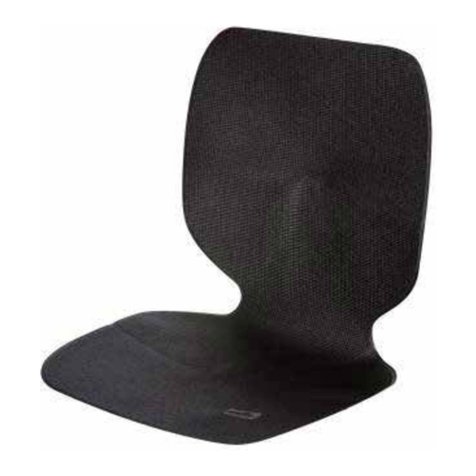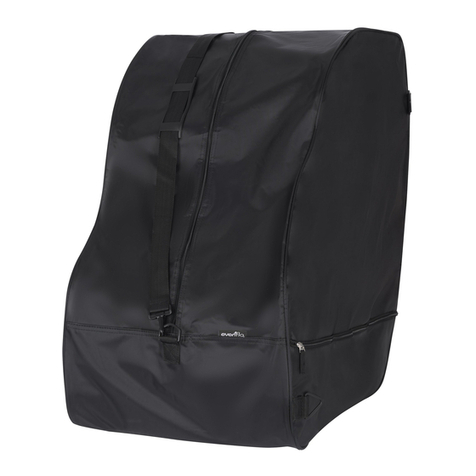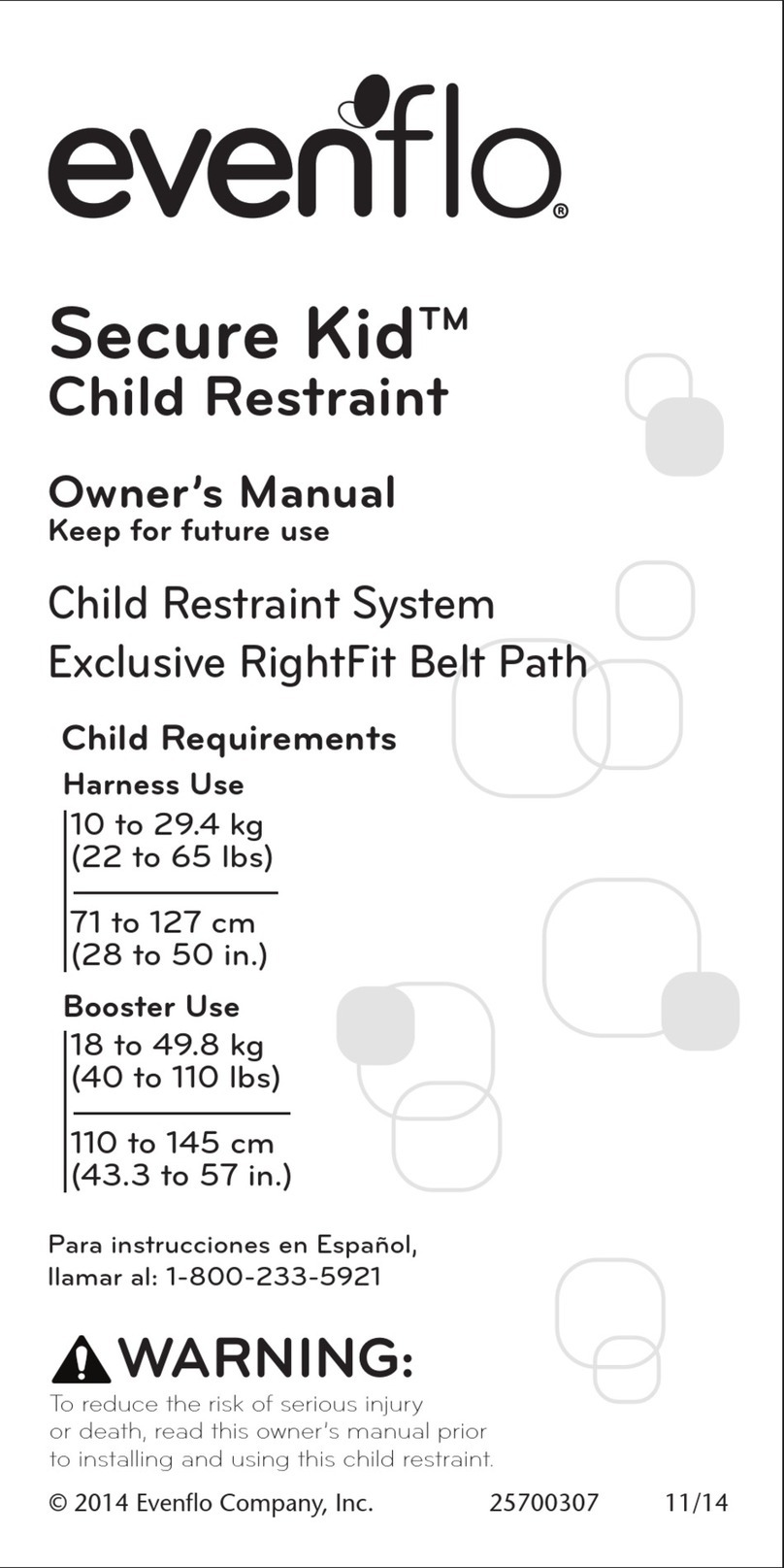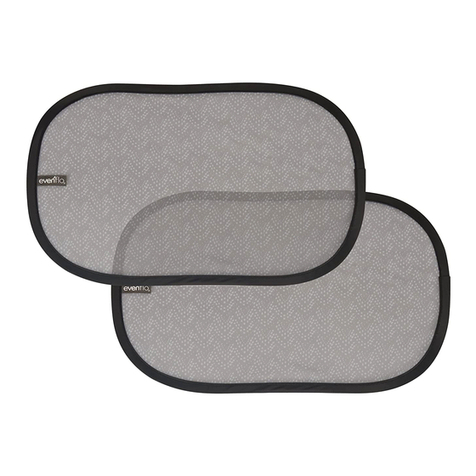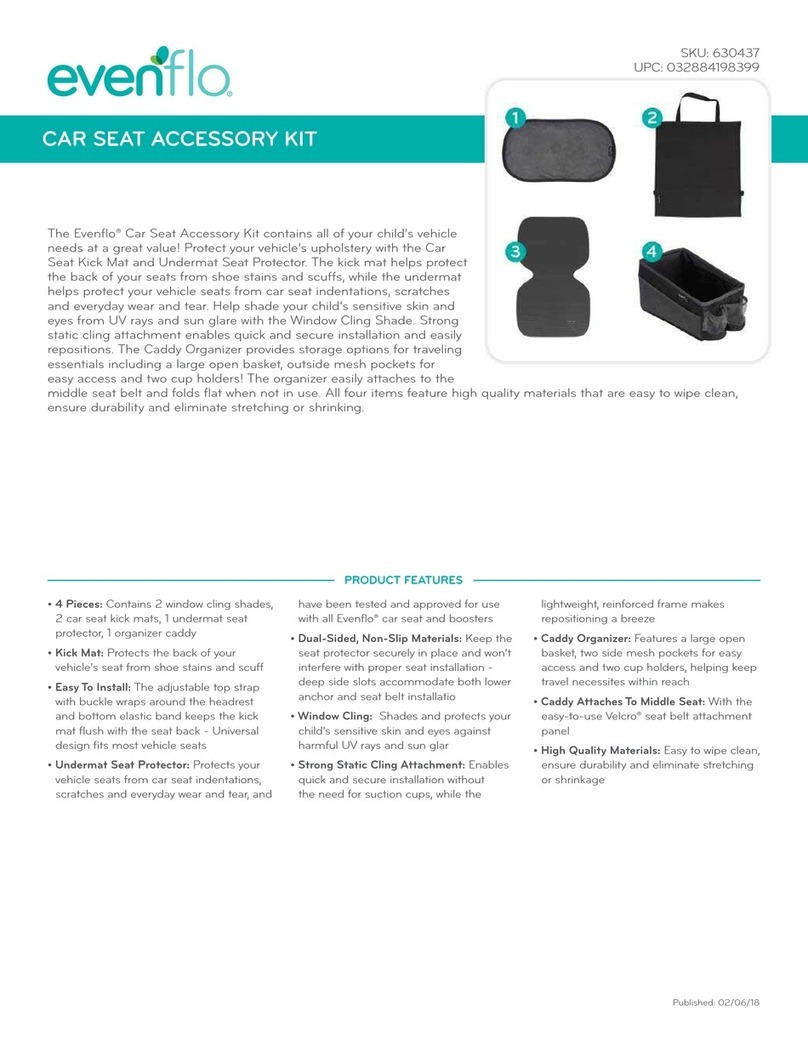WARNING
•DO NOT allow the vehicle seat belt release button to
touch the child restraint. Accidental contact may
cause the seat belt to release. If necessary, turn the
seat belt release button away from the child restraint
or move the child restraint to a different location.
• Failure to adjust the harness snugly around your child
may result in your child striking the vehicle’s interior
during a sudden stop or crash. Serious injury or death
may occur.
• Remove locking clip from vehicle seat belt when not
used with a child restraint, or the vehicle seat belt will
not properly restrain an adult or child. Serious injury
or death may occur.
LATCH Warnings
• This LATCH system is intended to be used ONLY as
described in these instructions. Serious injury or
death may result from misuse.
• In addition to these instructions, read and follow your
vehicle owner’s manual regarding installation of the
child restraint and LATCH. If there is a discrepancy,
follow your vehicle owner’s manual.
•ONLY use for securing convenience base to lower
LATCH anchor points.
•NEVER attach two LATCH connectors to one vehicle
lower anchor point.
•NEVER use the vehicle seat belts when using the
LATCH system. Using both together can cause slack
in a sudden stop or crash.
• When not in use, the LATCH connectors should be
securely stored in the storage area located in the
convenience base. Keep out of reach of children.
•ALWAYS be sure that the LATCH connectors are fully
engaged onto the LATCH anchor points by pulling
hard on the LATCH harness. If they are not totally
engaged, the LATCH system will not secure your child
restraint. Serious injury or death may result.
•DO NOT use this child restraint if it moves more than
1 inch (25 mm) forward or side-to-side at the vehicle
belt path. Serious injury or death may result from
poor installation. If you can not tightly secure the
child restraint, try again or move it to another
location.
4 5
WARNING
Location Warnings – cont.
a tight installation. If the child restraint cannot be
properly installed, DO NOT use this child restraint.
Consult vehicle owner’s manual, try a different seating
location or call Evenflo at 1-800-233-5921.
Premature Infants
•DO NOT use this or any other child restraint with a
premature infant until after consulting your doctor.
Premature infants may have difficulty breathing when
in a sitting position.
Vehicle Seat Belt Warnings
•DO NOT use this child restraint in a vehicle seating
position with door-mounted seat belts.
•DO NOT use this child restraint in a vehicle seating
position with seat belts that automatically move
along the vehicle frame when the door is opened.
These seat belts will not hold a child restraint properly.
•DO NOT use this child restraint rear-facing in a
vehicle equipped with lap belts that only lock during
a sudden stop or crash (emergency locking retractor
– ELR). You must use a seating location with a locking
seat belt. Check your vehicle owner’s manual to see
if you have lap belts with ELR’s.
•DO NOT loosen the vehicle seat belt to provide more
leg room as this will prevent the child restraint from
protecting your child.
• Fold-down armrests could pose a hazard to a rear-
facing child in certain types of collisions. Consult your
vehicle owner’s manual before installing any rear-
facing child restraint in front of a fold-down armrest.
• The headrest on the vehicle seat that the child faces
should be placed in the lowest position. The vehicle
seat back that the child faces must be fully padded
and free of any hard objects.
•DO NOT use this child restraint if it moves more than
1 inch (25 mm) forward or side-to-side at the seat
belt path. Serious injury or death may occur. Move
the child restraint to another seating location.
• If the vehicle seat belts are not routed and fastened
correctly, the child restraint may not protect your
child in a crash.






